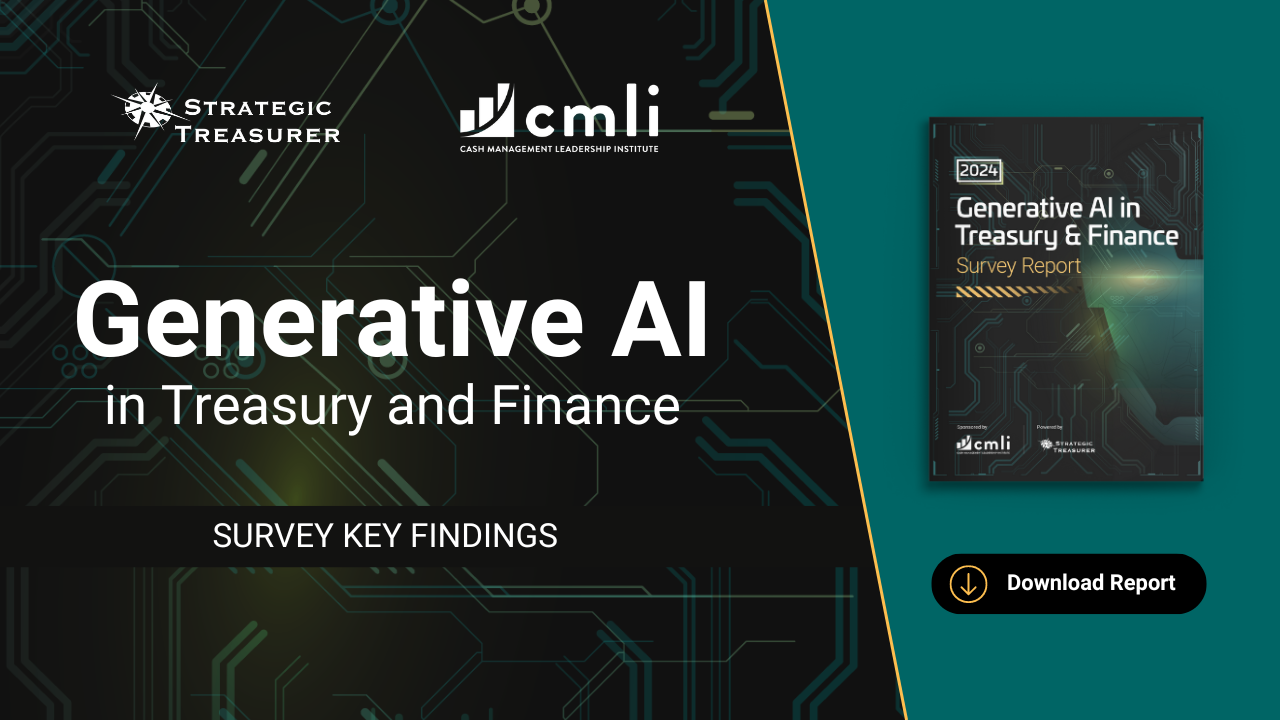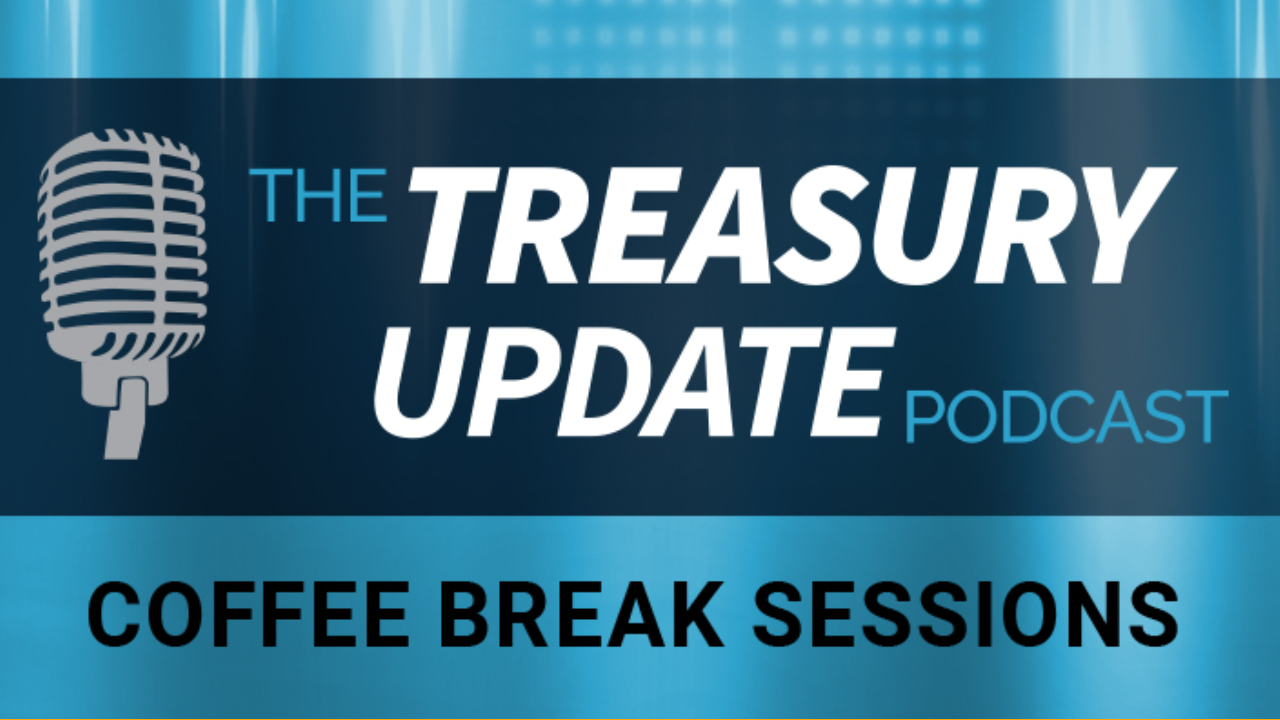
Session 114
What are Anomaly Detection Systems?
In today’s episode, we’ll hear from Paul Galloway on anomaly detection systems. What are they, and how are they used in treasury and finance? Tune in to find out.
Host:
Jonathan Jeffery, Strategic Treasurer


Speaker:
Paul Galloway, Strategic Treasurer


Episode Transcription - (Coffee Break Session Series) - Episode 114 - What are Anomaly Detection Systems?
Jonathan Jeffery 00:02
Welcome to the Treasury Update Podcast, Coffee Break Sessions presented by Strategic Treasurer, the show where we cover foundational topics and core treasury issues in about the same amount of time it takes you to drink your cup of coffee. I’ll be your host, Jonathan, media production specialist here at Strategic Treasurer. So sit back, relax, and enjoy the show. We are back with Paul Galloway to talk about what are anomaly detection systems. Paul, welcome to the show.
Paul Galloway 00:29
Thanks, Jon. Appreciate it.
Jonathan Jeffery 00:31
Can you jump right in and just define anomaly detection systems?
Paul Galloway 00:34
Yeah, this is going to be a pretty short definition, but these are systems that simply identify anomalies or observations that are out of the norm. Typically, this is tied to data sets of information. It can compare information that’s coming into historicals and detect where there might be patterns that don’t fit what the expectations are.
Jonathan Jeffery 01:01
- Can you give me a few examples of anomalies that this system might identify?
Paul Galloway 01:06
Yeah, I think from a treasury perspective, I think about payments, so bank transactions that come into a TMS and so these systems have the ability to analyze information over a period of time and determine, is there any unusual pattern in what we’re seeing, either it’s size or frequency relative to what’s happened in the past? Determining, you know these anomalies are identifying, I should say, may suggest that there’s fraud. And treasury teams can use this information to investigate a particular transaction or set of transactions, and figure out, are these good? Is there an issue, and respond to it. And you can do this on a daily basis, and it’s really critical when it comes to fraud, that you have the ability to act quickly. That gives you a greater chance to stop the fraud and get your money back.
Jonathan Jeffery 02:15
And how does the system distinguish between something that’s normal and abnormal? So that it knows if there’s fraud going on.
Paul Galloway 02:21
The key for any use of artificial intelligence or machine learning or anomaly systems like this is that you need to have a historical data set, and has to be over a long period of time. The more data that you have, the better that the system is able to detect anomalies or patterns that are out of the norm for transactions per se, let’s say we’ll go back to the bank transactions. It’s able to detect things that look like they’re out of place. That helps treasury teams, like I said earlier, it helps them in investigating any potential fraud that may be out there.
Jonathan Jeffery 03:08
Okay. And if your department’s changing up the ways they do a few things, the anomaly detection system might trigger something that’s intentional as fraud. Do you have to train it? When those changes are made? Do you have to train it? Hey, this isn’t fraud. This is something we’re doing. I know we haven’t done it in the past, and it might look like it. How do you how do you get the system to recognize those new items?
Paul Galloway 03:30
What happens with these systems is they typically learn over time, as changes occur to patterns of, let’s say, payments or transactions that occur at a bank. What it will do over that period of time is that becomes a new norm. It will learn from that and under, you know, recognize that, oh, okay, this is a normal pattern. So it may flag something for a period of time that may be a potential fraud as an anomaly. Because when it looks back at historical it’s going to say, Oh, well, you know, we didn’t expect this, but the use of forecasts can help alleviate some of that pain. So if you have forecasts that are involved, and you introduce that as a data set to you know, the anomaly detection system, and it utilizes that forecast, and that forecast, you can use machine learning to help you with accuracy of forecasts. So it looks at those data sets, historical it can look at forecasts, and then over a period of time, it’s going to learn from that eventually that will go away.
Jonathan Jeffery 04:43
Okay, gotcha. And you said that this is used a lot in payments. Is there anywhere else that treasurers are integrating anomaly detection systems with financial technology?
Paul Galloway 04:54
We’re seeing it with treasury management systems. It can happen with your you know, your reconciliation or collections platforms, your ERPs, any of these financial systems that are collecting data and information. These tools can be used to analyze the data and determine if there’s something that is out of sorts. When you think about fraud, fraud can be internal and external, and so it can help you across the board. Detect if there’s unusual behavior activities with the data sets or the way information is being reported even. These technologies are still relatively new, but we’re seeing them being integrated with financial systems across organizations. Now, the rate at which that’s being adopted, it’s still relatively low compared to other systems that are out there that are being utilized, that have been tested over a longer period of time, but we’re seeing a ramp up in organizations spending time and money investigating the use of artificial intelligence and machine learning to help them do their jobs better, and this is particularly big focus amongst finance and treasury teams. So we’re going to see the integration of these types of platforms within organizations, their systems, over, you know, next several years.
Jonathan Jeffery 06:33
So this isn’t something that’s been kind of left in the past as new AI comes out, it’s it’s going to stick around for a while.
Paul Galloway 06:41
I think it’s gonna stick around for a while. You know, this arena, this area, AI, ML, it’s evolving at a rapid pace. Organizations are gonna have to stay on top of it, because as it evolves, it has the potential to get even better over time, and that’s why you may see adoption rates are kind of slow right now, but I suspect that it’s going to pick up at a more rapid pace over the next several years, as the industry continues to mature and we’ll see these adoption rates increase.
Jonathan Jeffery 07:20
Well, thanks so much for sharing your insights on this Paul and to our listeners, remember to tune back every first and third Thursday of the month for another coffee break session. Thanks Paul. Thank you.
Announcer 07:30
This podcast is provided for informational purposes only, and statements made by Strategic Treasurer LLC on this podcast are not intended as legal, business, consulting, or tax advice. For more information, visit and bookmark StrategicTreasurer.com.
Generative AI in Treasury and Finance
Artificial intelligence (AI) has become one of the hottest topics for discussion of late. The growth of ChatGPT and Gemini has increased treasury professionals’ level of familiarity and has spurred additional thoughts and actions. The 2024 Generative AI in Treasury and Finance survey captured the current AI use for treasury activity, as well as future plans.
Coffee Break Sessions – A Treasury Update Podcast Series
A part of the Treasury Update Podcast, Coffee Break Sessions are 6-12 minute bite-size episodes covering foundational topics and core treasury issues in about the same amount of time it takes you to drink your coffee. The show episodes are released every first and third Thursday of the month with Host Jonathan Jeffery of Strategic Treasurer.




